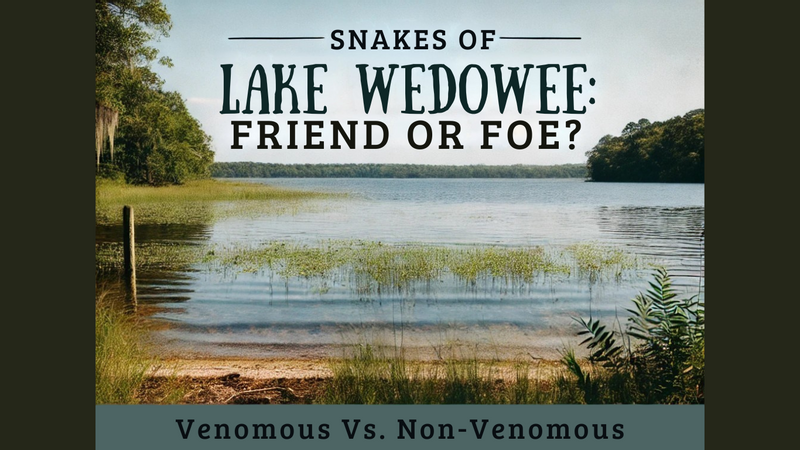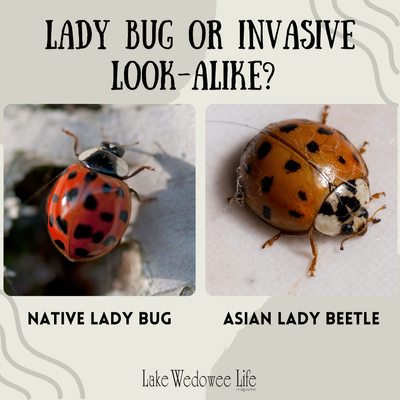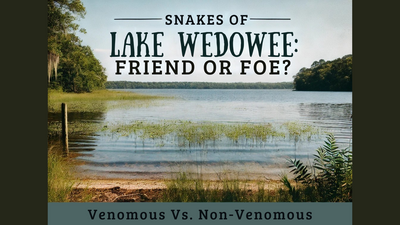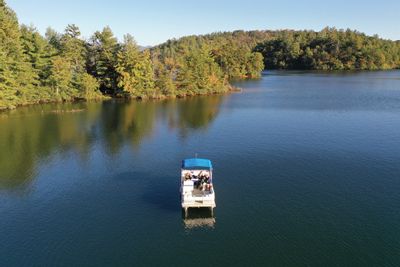Snakes of Lake Wedowee: Identifying Water Snakes vs. Cottonmouths

Alabama’s beautiful lakes, including Lake Wedowee, are home to a variety of wildlife—including snakes. Among the most commonly spotted serpents near the water are non-venomous water snakes and the infamous venomous cottonmouth (also known as a water moccasin). While both species thrive in aquatic environments, it’s important to understand their differences and how to react if you encounter one on your property.
Non-Venomous Water Snakes
Several species of non-venomous water snakes (genus Nerodia) can be found in Alabama, often mistaken for cottonmouths due to their similar appearance. These snakes are beneficial to the ecosystem, preying on fish, frogs, and small aquatic creatures.
Key Characteristics of Non-Venomous Water Snakes:
- Head Shape: Narrow and more rounded compared to the cottonmouth’s distinct triangular head.
- Eyes: Round pupils (cottonmouths have vertical, cat-like pupils).
- Body Markings: Dark bands or blotches along the body, often with a more uniform pattern than cottonmouths.
- Behavior: When threatened, water snakes may flatten their bodies and strike defensively, but they lack venom.
Water snakes in Lake Wedowee are typically harmless, though they can bite if handled or provoked. Unlike the cottonmouth, their bite is not medically significant.
The Venomous Cottonmouth (Water Moccasin)
The cottonmouth (Agkistrodon piscivorus) is the only venomous water snake in Alabama. This snake gets its name from the distinctive white interior of its mouth, which it displays when threatened. While they are often unfairly feared, cottonmouths are not aggressive unless provoked.
Key Characteristics of Cottonmouths:
- Head Shape: Large, broad, and triangular, with a noticeable separation from the neck.
- Eyes: Vertical slit pupils.
- Body Markings: Dark bands that can be difficult to distinguish on older adults, which may appear almost solid black or brown.
- Behavior: When approached, cottonmouths may stand their ground, open their mouths wide, and emit a musky odor as a warning.
Unlike water snakes, cottonmouths have venom capable of causing tissue damage, swelling, and pain. Immediate medical attention is necessary if bitten.
What to Do If You Encounter a Snake on Your Property
If You See a Non-Venomous Water Snake:
- Appreciate it from a distance—it plays a role in controlling fish and amphibian populations.
- Avoid handling or cornering the snake, as it may bite defensively.
- If necessary, gently encourage it away using a broom or water hose.
If You See a Cottonmouth:
- Do not attempt to kill or handle the snake—this is when most bites occur.
- Keep pets and children away from the area.
- Give the snake space; it will likely retreat on its own.
- If the snake remains in a high-traffic area, consider contacting a local wildlife removal expert.
Final Thoughts
Both non-venomous water snakes and venomous cottonmouths serve an important role in Alabama’s ecosystems. Misidentification often leads to unnecessary fear and the needless killing of beneficial snakes. By learning to distinguish between them and responding appropriately, you can safely coexist with these fascinating reptiles while enjoying the beauty of Lake Wedowee.




